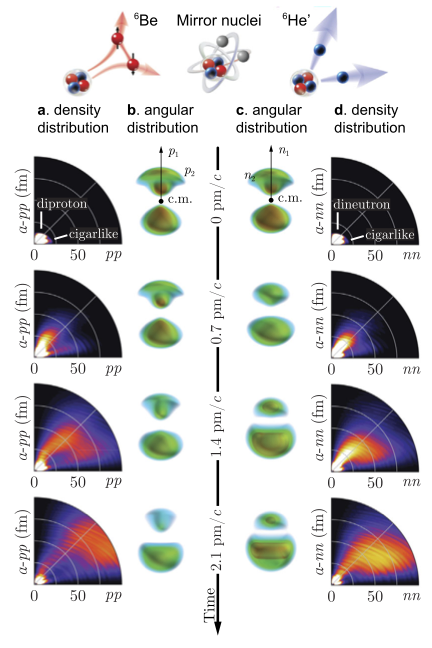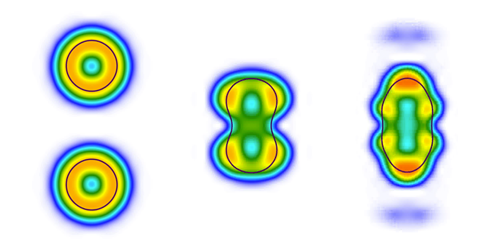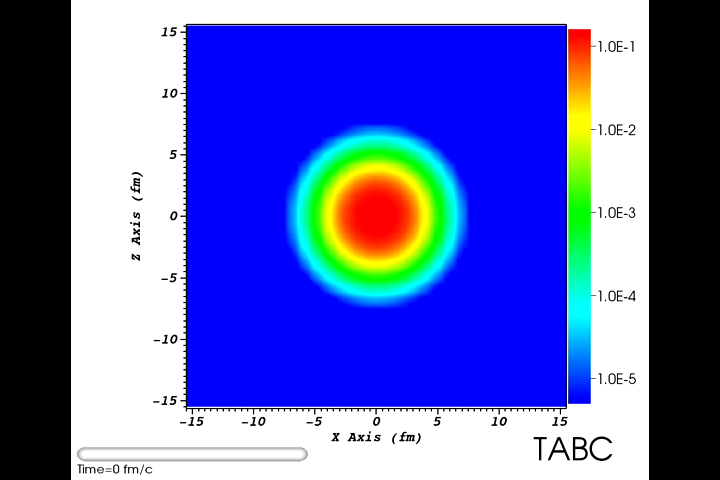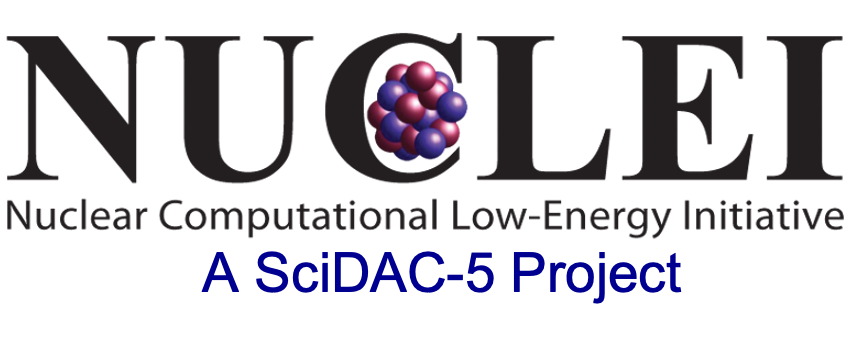NUCLEI Videos
On this page are links to animated visualizations of NUCLEI-related research.
What makes the nucleus tick?

Simin Wang, a former research associate at FRIB, and NUCLEI researcher Witek Nazarewicz show how FRIB can spot signatures of unusual nuclear events and use those as windows into the nucleus. Learn more and watch an animation here. See the supplemental material from the published article on Fermion Pair Dynamics in Open Quantum Systems for additional movies.
Nuclear Fusion in Hi-Def

A new model by NUCLEI researchers Bastian Schuetrumpf and Witek Nazarewicz of MSU provides a detailed visualization of the clustering of protons and neutrons within the excited nuclear compound formed just after two nuclei collide and fuse. Learn more and watch the animations here. See the supplemental material from the published article on Cluster formation in precompound nuclei in the time-dependent framework for additional movies.
Nuclear Pasta

Large scale GPU computing is used to perform detailed molecular dynamics (MD) simulations of the crusts of neutron stars, including complex nuclear pasta phases, to determine possible structures. A nuclear pasta visualization by David Reagan (Advanced Visualization Lab IU), A. S. Schneider, J. Hugho, C. J. Horowitz, and D. Berry is available here.
Twisted Nuclei

NUCLEI researchers Bastian Schuetrumpf and Witek Nazarewicz of MSU with collaborator Paul-Gerhard Reinhard of the Universitat Erlangen extended twist-averaged boundary conditions (TABC), which have been found to control the finite-volume effects in three-dimensional density functional theory, to time-dependent modes. They demonstrated that TABC can reduce finite-volume effects drastically without adding any additional parameters associated with absorption at large distances. See the supplemental material from the published article on Time-dependent density functional theory with twist-averaged boundary conditions for demonstration movies.
